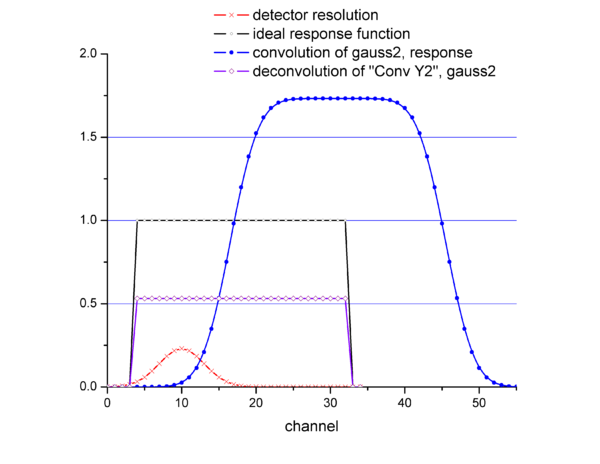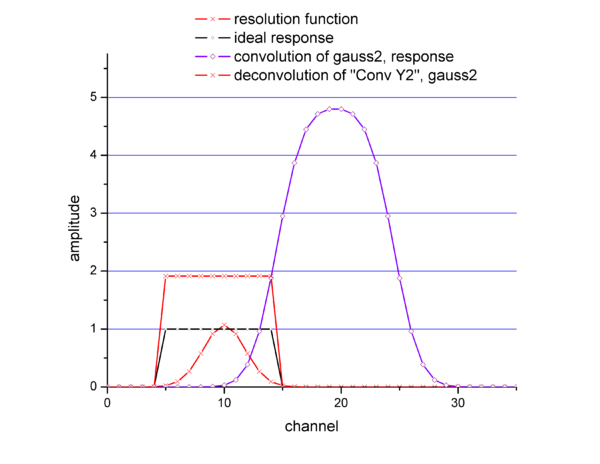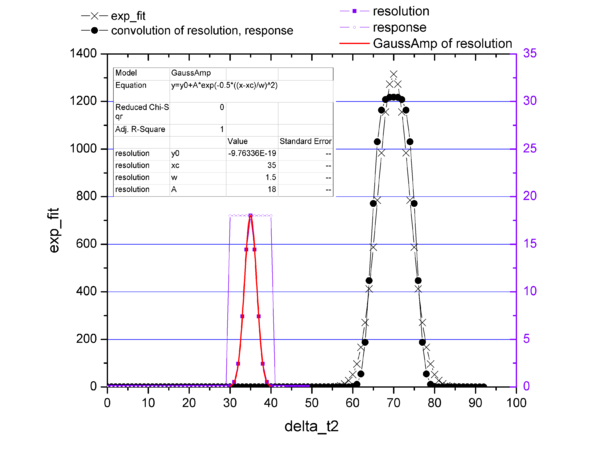Difference between revisions of "2n Position resolution"
Jump to navigation
Jump to search
| Line 11: | Line 11: | ||
Experimental distribution of TDC difference time spectrum (blue) and ideal response function (red) are shown below: | Experimental distribution of TDC difference time spectrum (blue) and ideal response function (red) are shown below: | ||
| − | [[File: | + | [[File:experimental_data_fit.png | 600px]] |
| − | |||
| − | |||
| − | |||
| − | |||
| − | |||
| − | |||
| − | |||
Hence, any coordinate of the neutron hit has the following uncertainty in: sigma = 2.8 ns and its value converted into cm is 2.8 ns x 7.41 cm/ns = 20.7 cm. The total length of the active area of the neutron detector is 75 cm. | Hence, any coordinate of the neutron hit has the following uncertainty in: sigma = 2.8 ns and its value converted into cm is 2.8 ns x 7.41 cm/ns = 20.7 cm. The total length of the active area of the neutron detector is 75 cm. | ||
Revision as of 16:26, 26 April 2013
FFT algorithm test
If we take narrower response function we will get
FFT application
Experimental distribution of TDC difference time spectrum (blue) and ideal response function (red) are shown below:
Hence, any coordinate of the neutron hit has the following uncertainty in: sigma = 2.8 ns and its value converted into cm is 2.8 ns x 7.41 cm/ns = 20.7 cm. The total length of the active area of the neutron detector is 75 cm.


